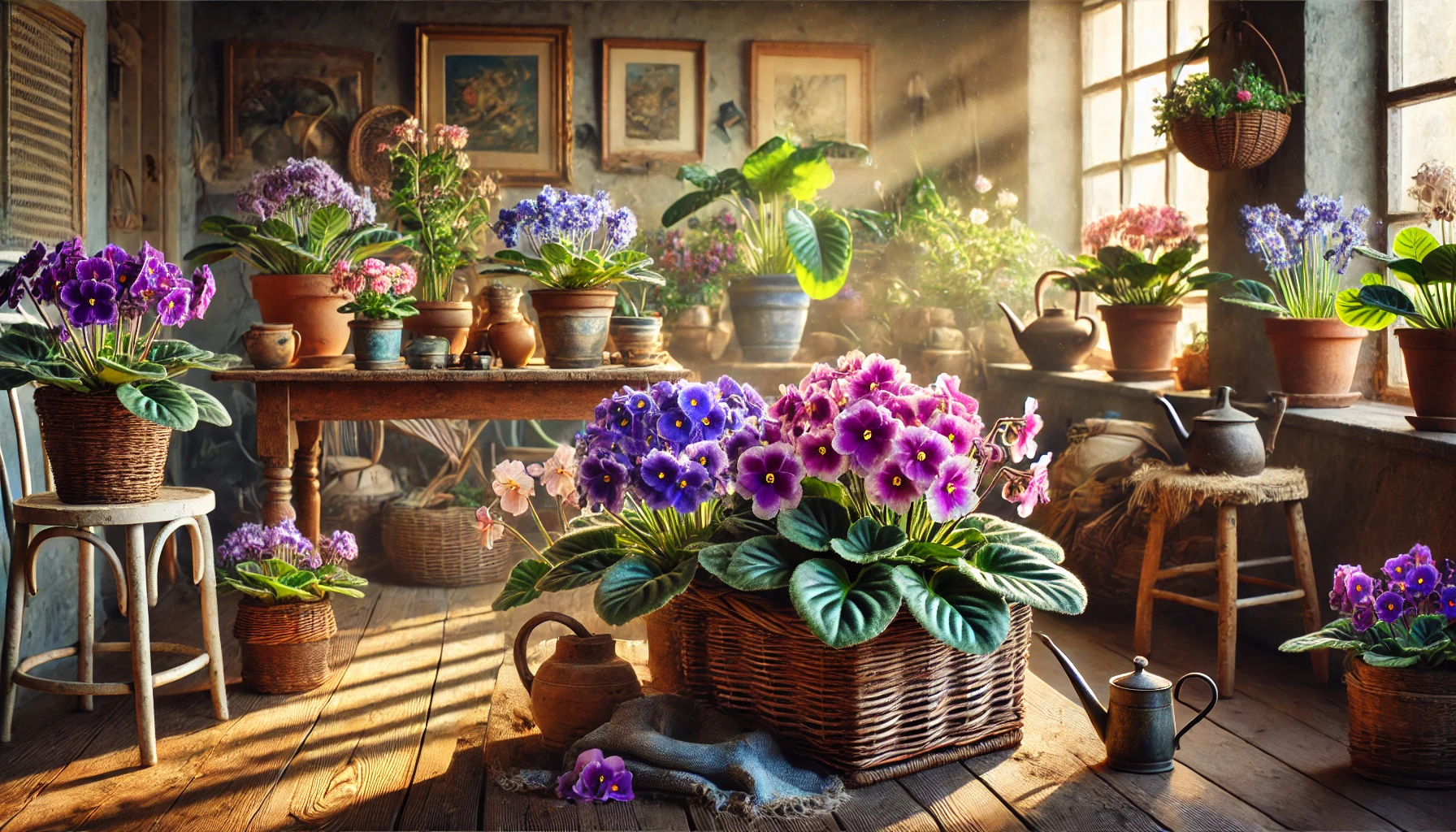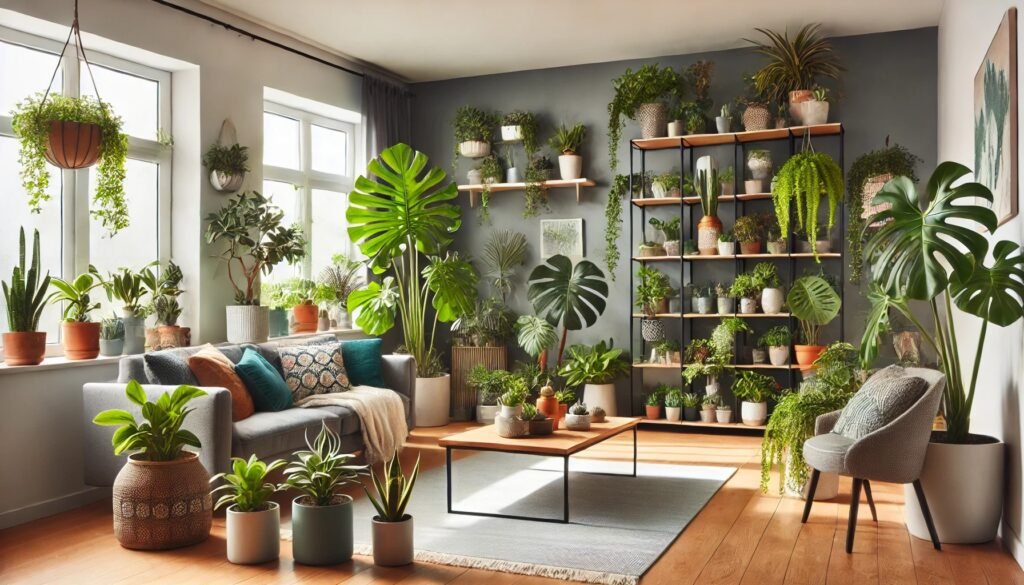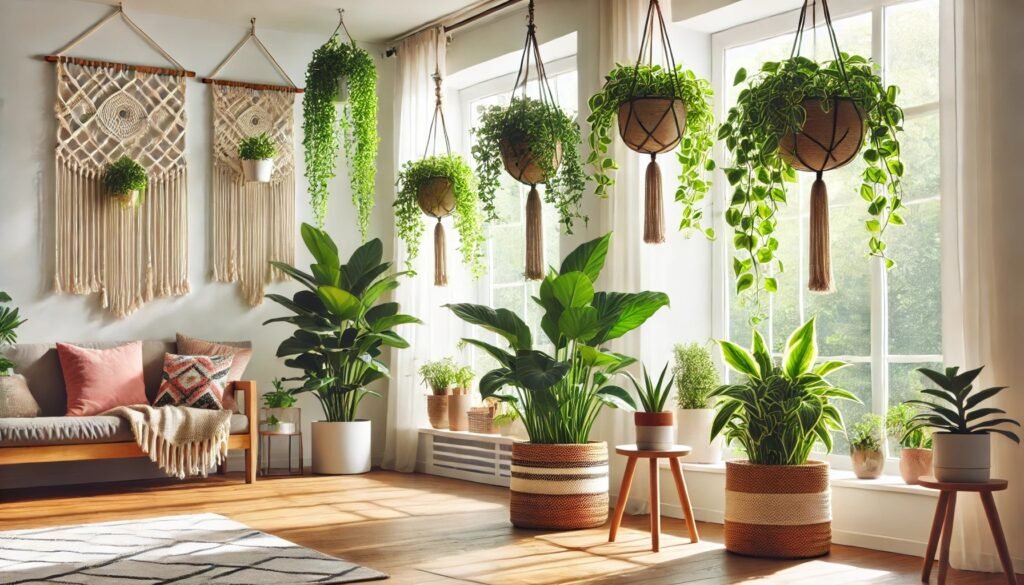
When you think of houseplants that blend elegance with ease of care, African Violets are a top contender. These charming plants, known for their velvety leaves and vivid flowers, have captured the hearts of plant enthusiasts across the Northern Hemisphere. Whether you’re a seasoned gardener or just starting out, African Violets offer a delightful way to add color and warmth to your home.
The Allure of African Violets
African Violets (Saintpaulia) are native to the cloud forests of East Africa, where they thrive in the dappled light beneath the forest canopy. Despite their exotic origins, these plants have become a staple in households around the world. What makes African Violets so irresistible? It’s a combination of their compact size, vibrant flowers, and the sheer variety of colors and forms available.
- Colors and Varieties: African Violets come in a spectrum of colors ranging from deep purples and blues to pinks, reds, and even whites. Some varieties even boast multi-colored or ruffled petals, adding an extra layer of intrigue. With hundreds of hybrids to choose from, there’s an African Violet to suit every taste and style.
- Flowering Potential: One of the most appealing aspects of African Violets is their ability to bloom almost continuously under the right conditions. With proper care, these plants can produce flowers year-round, brightening your space with their cheerful blossoms.
Creating the Perfect Environment
African Violets are relatively easy to care for, but they do have some specific needs. To help your plants thrive, it’s essential to create an environment that mimics their natural habitat.
Light: The Key to Blooming Success
African Violets love bright, indirect light. In their native environment, they grow under the shade of trees, so they’re used to filtered sunlight. In your home, place them near a north- or east-facing window where they can enjoy plenty of light without direct sun exposure.
- Signs of Too Much or Too Little Light: If your African Violet’s leaves start to curl or turn pale, it might be getting too much light. Conversely, if the plant stops blooming and the leaves look leggy, it might need more light. Adjust the plant’s location accordingly to find that perfect balance.
- Supplemental Lighting: If natural light is limited, especially during the shorter winter days, consider using artificial grow lights. A fluorescent light positioned about 12 inches above the plant can provide the necessary illumination without overheating the leaves.
Watering: The Art of Keeping Soil Moist
Watering African Violets can be a bit of a balancing act. These plants prefer consistently moist soil but are prone to root rot if left in standing water.
- Bottom Watering: One of the best methods for watering African Violets is bottom watering. Place the pot in a shallow dish of water and let the plant soak up the moisture from the bottom. Once the top of the soil feels moist, remove the pot from the dish to prevent overwatering.
- Water Quality: African Violets are sensitive to the chemicals in tap water, particularly chlorine and fluoride. If possible, use room-temperature distilled or filtered water. If you must use tap water, let it sit out for 24 hours to allow the chemicals to dissipate before using it on your plants.
- Avoid Watering the Leaves: Water droplets on the leaves can cause unsightly spots or even rot. When watering, aim for the base of the plant or use the bottom watering method to keep the leaves dry.
Soil and Potting: Supporting Healthy Growth
African Violets thrive in a light, well-draining soil mix. Regular potting soil can be too heavy and may retain too much moisture, leading to root rot.
- Ideal Soil Mix: You can either purchase a pre-made African Violet mix or create your own by combining equal parts peat moss, vermiculite, and perlite. This blend provides the right balance of aeration and moisture retention.
- Potting Tips: Choose a small pot, as African Violets prefer to be slightly root-bound. Repot your plant every 6-12 months to refresh the soil and provide room for new growth. When repotting, remove any dead or rotting roots and replace the soil entirely.
Maintaining the Health and Beauty of Your African Violets
Once you’ve created the ideal environment, it’s important to maintain it with regular care. This includes feeding, grooming, and keeping an eye out for pests and diseases.
Feeding: Nourishing Your Blooms
African Violets benefit from regular feeding during their active growing period, typically from spring to fall. A balanced, water-soluble fertilizer formulated for African Violets will provide the necessary nutrients to keep your plant healthy and blooming.
- Feeding Schedule: Feed your plant every 2-4 weeks, following the instructions on the fertilizer package. Be careful not to over-fertilize, as this can lead to a build-up of salts in the soil, which can harm the plant.
- Signs of Nutrient Deficiency: If your African Violet’s leaves start to yellow or the plant stops blooming, it may need more nutrients. Adjust your feeding schedule accordingly, but always start with a diluted solution to avoid over-fertilization.
Grooming: Keeping Your Plant Looking Its Best
Regular grooming helps keep your African Violet healthy and encourages new growth.
- Remove Dead Leaves and Flowers: As soon as leaves or flowers start to wilt, remove them to prevent any potential disease. This also allows the plant to focus its energy on producing new blooms.
- Leaf Pruning: African Violets can become leggy over time. To maintain a compact shape, gently prune back the outer leaves, which will encourage the plant to produce new growth from the center.
Pests and Diseases: Protecting Your Plant
African Violets are relatively pest-resistant, but they can occasionally fall victim to common houseplant pests like aphids, mites, or mealybugs.
- Pest Control: If you notice any pests, isolate the affected plant immediately to prevent the infestation from spreading. Use a gentle insecticidal soap or neem oil to treat the plant. Repeat the treatment weekly until the pests are gone.
- Preventing Disease: Proper watering and good air circulation are key to preventing diseases like powdery mildew or root rot. Avoid overcrowding your plants, and ensure they have enough space to breathe.
Propagating African Violets: Growing Your Collection
One of the joys of growing African Violets is how easily they can be propagated. With a little patience, you can grow new plants from leaf cuttings, expanding your collection or sharing these lovely plants with friends.
Propagation by Leaf Cuttings
Propagating African Violets by leaf cuttings is a simple process that yields rewarding results.
- Choosing a Leaf: Select a healthy, mature leaf from the center of the plant. Cut the leaf with a sharp, clean blade, leaving about an inch of the stem attached.
- Planting the Cutting: Insert the stem into a small pot filled with a light, well-draining soil mix. Water the soil lightly and cover the pot with a plastic bag or dome to create a humid environment.
- Caring for the Cutting: Place the cutting in a warm, bright spot, but avoid direct sunlight. Within a few weeks, you should see new growth emerging at the base of the leaf. Once the new plantlets are large enough to handle, they can be separated and potted individually.
Bringing African Violets Into Your Home
African Violets are more than just beautiful houseplants; they’re a testament to nature’s ability to adapt and thrive in a variety of environments. By understanding their needs and providing the right care, you can enjoy these elegant blooms in your home year-round.
Whether you’re looking to add a splash of color to a windowsill or start a new hobby, African Violets offer endless possibilities. With their stunning flowers and manageable care requirements, these plants are perfect for anyone looking to bring a bit of natural beauty indoors.
So why not give African Violets a try? With a little attention and care, you’ll soon find yourself enchanted by their timeless elegance.
Stay connected with the world of plants! Subscribe to Phylofy for expert gardening tips, DIY projects, and eco-friendly inspiration. Join our community and nurture your love for nature. Don’t miss exclusive content and updates. Subscribe now!



